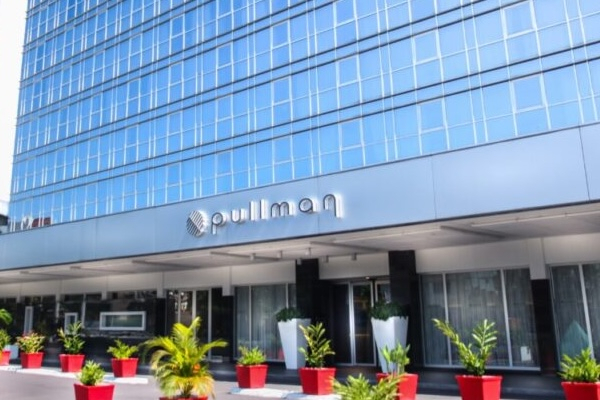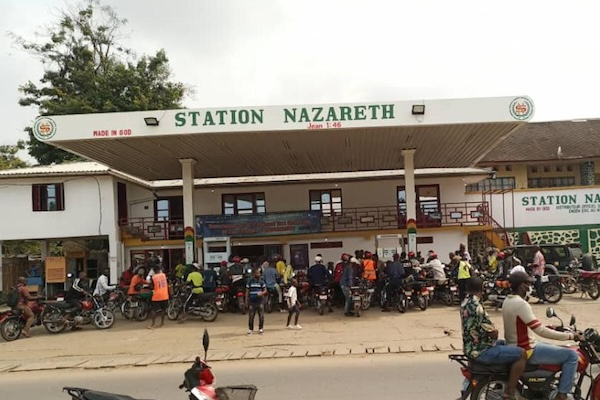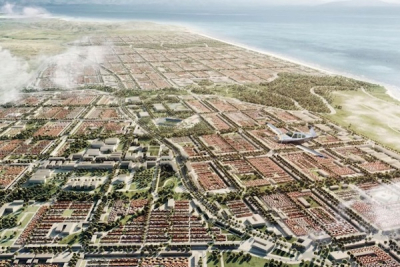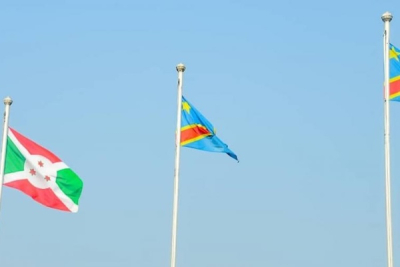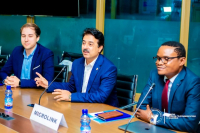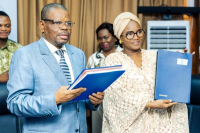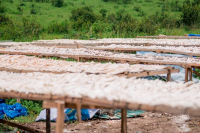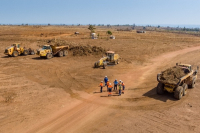
News (571)
The Democratic Republic of Congo plans to invest $6 million to maintain its stake in Grands Hôtels du Congo SA, a joint venture at risk of shareholder imbalance.
During the 53rd Council of Ministers on July 25, Minister of Portfolio Jean-Lucien Bussa requested the funding to preserve the State’s position in the hotel company’s capital following a proposed recapitalisation.
Created in 1968, Grands Hôtels du Congo SA operates under a mixed ownership model. The Congolese State, through the Ministry of Portfolio, owns 47%, while CNSS, LAC, and SNCC hold 1% each. Belgian investor Victoria Equity controls the remaining 50%.
The company runs two key assets in Kinshasa: the Pullman Hotel (formerly “Cube”), currently active, and La Tour, a 387-room hotel left dormant for years due to funding gaps.
To revive La Tour, Victoria Equity recently injected a $6.2 million shareholder loan. With no matching contribution from the State, the investor offered to convert the loan into shares, a move that would reduce the State's influence in the company’s governance.
Minister Bussa warned that this would upset the current ownership balance. He asked the government to release $6 million to match the private investment and prevent dilution of public control.
Minister Bussa aligned his request with President Félix Tshisekedi’s call for active management of State-owned assets. At the 51st Council of Ministers, Tshisekedi had criticized the marginalisation of State interests in joint ventures and urged stricter oversight of public shareholdings.
This strategy follows the Estates General on the Public Portfolio held in December 2024. The forum recommended revitalising undervalued public assets, especially in sectors like tourism.
Bussa argued the investment was not only defensive but also strategic. He said the reopening of La Tour, scheduled for September 2025, would significantly boost the value of the company. With La Tour having 387 rooms and being expected to double the company’s market value, Bussa stressed that failing to act now could cost the State both influence and future financial returns.
This article was initially published in French by Boaz Kabeya (intern)
Edited in English by Ange Jason Quenum
In Kindu, capital of Maniema province, fuel prices have soared. Dealers currently sell one litre of fuel at 10,000 Congolese francs (CF), over 66% above the official price of 6,000 CF set by provincial authorities. This official price, established by a governor's decree, covers all logistical and economic costs but is being widely ignored.
Local authorities claim the price hike lacks justification. Yet, testimonies collected by the Congolese Press Agency (ACP) reveal a different story. Dealers, called "Gaddafis," suspended their activities to protest a sharp increase in taxes. The provincial government imposed a conventional fee of FC 75,000 per barrel, which dealers say makes business unsustainable.
The fuel crisis sparked a backlash. On 25 July 2025, motorbike unions organised a protest march across several roads in Kindu. They demanded strict enforcement of the official fuel price, reflecting local frustrations with rising costs.
To cool tensions, the provincial Ministry of Hydrocarbons opened talks with the fuel operators. Georges Mukunguzi Kandolo, Director of Cabinet at the Ministry, warned that authorities might impose measures if retailers fail to justify price increases. He stressed that fuel, as a strategic product, must not be subject to unilateral price hikes.
Meanwhile, the provincial government announced it would intensify inspections and controls. It aims to crack down on speculation and restore order to the fuel supply chain.
Ronsard Luabeya, intern
The Regional Maritime Development Bank (RMDB) is set to launch its operations in the first quarter of 2026. Paul Adalikwu, Secretary General of the Maritime Organization of West and Central Africa (MOWCA), announced this on July 23, 2025, after a working session with Jean-Pierre Bemba, Deputy Prime Minister and Minister of Transport. Maritime experts from the Democratic Republic of Congo (DRC), Cameroon, and Côte d’Ivoire also attended the meeting.
MOWCA member states are driving the RMDB project, which aims to support the maritime sector's development in West and Central Africa. Adalikwu stated that this regional financial institution will fund projects related to port infrastructure, maritime fleets, logistics, and professional training in the sector. The bank expects to offer preferential, single-digit interest rate loans, providing financing opportunities to member countries, particularly the DRC.
Despite significant hydrographic potential, including the Congo River, its tributaries, and several navigable lakes, the DRC struggles to fully use this river network for transport and fishing. This lag is primarily due to a lack of suitable infrastructure, no safe navigation vessels, and a shortage of modern ports.
Underutilized Sector
The government is considering banning "baleinières," flat-bottom wooden boats capable of carrying up to 140 tons of goods and dozens of passengers, due to a rising number of nautical accidents. Over 200 deaths linked to shipwrecks have been reported since January 2025. The Ministry of Transport recommends introducing boats that comply with technical standards, which requires better access to financing for shipyards.
Furthermore, the government's 2024-2028 action plan includes building 400 modular ports to facilitate the evacuation of agricultural products from rural areas. However, budget constraints currently hinder this project.
In this context, the RMDB emerges as a strategic financing tool to modernize the fleet and secure river transport.
While the official launch is set for 2026, some preparatory actions are already underway. Nigeria, the host country for the institution with headquarters in Abuja, appointed Adeniran Aderogba as the RMDB CEO last May. In June, the bank announced the upcoming finalization of a $150 million financing package for a strategic shipyard in Nigeria. This aims to improve the sub region’s ship repair and maintenance capacity.
Finally, during a bilateral meeting in July 2024 between the Congolese Minister of Transport and the MOWCA Secretary General, Congolese authorities were invited to appoint a representative to the RMDB’s board of directors to represent the DRC.
Timothée Manoke (Intern)
Egypt’s Elahramat Engineering signs deal to support infrastructure projects, including a new urban center in Kalemie.
Highlights:
- MoU signed between Tanganyika province and Egypt’s Elahramat Engineering on July 21, 2025
- Planned 40 km² urban extension aims to move Kalemie to higher ground
- Project includes housing, roads, airport upgrade, and industrial zone
On July 21, 2025, the provincial government of Tanganyika, Democratic Republic of Congo, signed a memorandum of understanding with Elahramat Engineering, an Egyptian company under the Mahmoud Samih Holding group. The agreement outlines both parties’ intention to cooperate on major infrastructure projects across the province, notably the construction of a new town in Kalemie, the provincial capital.
The initiative addresses Kalemie’s vulnerability to flooding by proposing an urban extension on a non-flood-prone site. A master plan for this “new Kalemie” was previously drawn up in 2020 by Polish firms Newton Company and Open Architekt. The 40 km² development would stretch northeast from the airport to the village of Lukwangulo and from Kainda to Kasambondo.
Spanning a 20-year timeline, the project aims to address urban growth, drainage issues, and unplanned land use. To date, neither the 2020 plan nor the newly signed MoU discloses projected costs or funding sources.
Under the terms of the deal, Elahramat Engineering is expected to provide technical and operational support. Local authorities have presented the Mahmoud Samih Holding group as a major contributor to Egypt’s new administrative capital, citing its role in building key facilities such as monumental gates, residential areas, and memorial sites.
Beyond the new town, the MoU prioritizes several initiatives: social housing, road upgrades, a health and education infrastructure program, an agri-food and industrial park, and the modernization of Kalemie’s airport. Both parties also agreed to consider additional projects based on evolving priorities.
The signing followed a diplomatic visit to Egypt by Governor Christian Kitungwa Muteba and National Planning Minister Guylain Nyembo earlier in July. Their mission included site visits and talks with Egyptian construction and infrastructure firms.
Mahmoud Samih Holding announced it could begin work on the priority projects within 60 days of the MoU’s signature.
This article was initially published in French by Timothée Manoke (intern)
Edited in English by Ola Schad Akinocho
The Democratic Republic of Congo (DRC) will soon start building four one-stop ports in South Kivu province to ease trade with Burundi. The announcement came on July 22 after a meeting in Kinshasa between Julien Paluku, DRC's Minister for Foreign Trade, and project coordinator Thierry Kayembe. They selected Kavimvira, Nyamoma, Rubenga, and Kamanyola as the sites for the ports.
The ports form part of the Trade Facilitation and Integration Project for the Great Lakes Region (PFCIGL). The World Bank funds the $250 million project, allocating $152 million to the DRC, $90 million to Burundi, and $8 million to COMESA. The project follows the trade agreement signed by the DRC and Burundi in Kinshasa on April 29, 2022.
In the DRC, the program aims to upgrade basic trade infrastructure to promote cross-border commerce. It will modernize the border posts at Kavimvira, Nyamoma, Rubenga, and Kamanyola. The project also includes building and improving border markets in Bunagana, Bukavu, Kavimvira, and Kasindi; upgrading lake ports at Kalundu and Idjwi; rehabilitating roads near Nyamoma and Rubenga border posts; and constructing a bridge over the Ruzizi River at Kiliba to improve connectivity between the DRC and Burundi.
The one-stop ports will centralize technical services at border crossings, making trade formalities easier for traders in North and South Kivu. The Office congolais de contrôle (OCC) and Burundi’s Bureau of Standards will soon sign a memorandum of understanding to simplify trade procedures further. This collaboration will focus initially on the Kavimvira-Gatumba border post. It forms part of the Simplified Trade Regime (RECOS), which helps small cross-border traders.
Starting August 15, the town of Uvira will launch subsidy programs to strengthen high-potential export value chains. These programs will mainly help women and young people who organize themselves in cooperatives or associations. According to Thierry Kayembe, beneficiaries will rotate, ensuring fair distribution of support.
Ronsard Luabeya, intern
The new facility in Kinshasa aims to supply critical medical, industrial, and aeronautical gases across the country.
Highlights:
● First national plant for medical, industrial, and aeronautical gas production
● Nearly 75% of Congolese hospitals lacked oxygen access before this project
● $3.6M investment, including $1.6M support from the Fonds de promotion de l’industrie (FPI)
The Democratic Republic of Congo (DRC) has inaugurated its first industrial gas production facility, Oxygaz RDC, marking a crucial step toward resolving the country’s longstanding oxygen supply crisis. Opened on July 19, 2025, by Minister of Industry and SME-SMI Development Louis Watum Kabamba, the plant is located in Limete, Kinshasa, and operated by Congolese conglomerate Mike Food & Services (MFS) Group.
With a total investment of $3.6 million—including $2 million in private Congolese capital and $1.6 million in public support from the Fonds de promotion de l’industrie (FPI)—the facility is now the leading domestic producer of oxygen and nitrogen cylinders for use in medical, pharmaceutical, industrial, and aeronautical sectors.
According to Mike Lundadila Koketua, President of MFS Group, the project addresses a dire need, as nearly 75% of hospitals in the DRC have never had access to oxygen, and only 15% currently receive it on a continuous basis. The plant currently provides 50 direct and 100 indirect jobs, with future expansion planned across other provinces.
Founded in 2018, Groupe MFS is a Congolese company active in several sectors: agrifood, real estate, logistics, general trade, industry, and mining.
This article was initially published in French by Ronsard Luabeya (intern)
Edited in English by Ola Schad Akinocho
Microlink Networks eyes key role in public digitization, data center development
Highlights:
- S.-based Microlink Networks in Kinshasa for an exploratory mission
- The company proposes to digitize public services and build data centers
- Political support acknowledged, but no formal agreement signed yet
On July 17, 2025, Augustin Kibassa Maliba, the DRC’s Minister of Posts, Telecommunications, and the Digital Sector, welcomed a delegation from American tech company Microlink Networks in Kinshasa. The visit marks a potential turning point in the country's ambition to digitize public services and modernize its digital infrastructure.
Microlink, a U.S.-based firm known for its data center and structured cabling solutions, expressed its strong interest in becoming a strategic technology partner to the Congolese state. “We want to be a partner of choice for digitization projects in the DRC,” said Yaseen Khalid, CEO of the company. He highlighted their intention to contribute to data center construction and hosting of government information systems—both critical to the country’s digital transformation goals.
Microlink’s marketing director, Ruslan Khamidullin, commended the Minister’s openness and noted that political support has been promised to help advance discussions. Still, the talks remain exploratory, with no formal agreement signed at this stage.
The firm specializes in IT infrastructure deployment, including secure communications, IP surveillance, and turnkey digital solutions for public and private institutions. Its entry into the DRC would align with Kinshasa’s broader push to improve digital governance and public service delivery through international partnerships.
This article was initially published in French by Boaz Kabeya (intern)
Edited in English by Ola Schad Akinocho
The United Nations Development Programme (UNDP) and the Industrial Promotion Fund (FPI) established a two-year partnership on July 11, 2025. This collaboration aims to foster inclusive and sustainable economic growth in the Democratic Republic of Congo, DRC. According to the memorandum of understanding between the two parties, the cooperation framework focused on three priority areas: financial inclusion, strengthening technical capacities, and supporting local entrepreneurship, particularly in agriculture.
The initiative includes direct support for small-scale farmers and artisans, primarily in rural and peri-urban areas. The agreement emphasizes improving access to financing for vulnerable groups, including women, youth, and those in precarious situations, whose projects aim to build agricultural value chains.
Additionally, the partnership involves capacity building for financial service providers. These providers are expected to better support local economic activities and establish themselves in areas underserved by microfinance institutions or savings and credit cooperatives. Support is also planned to strengthen the internal management of incubators and improve the managerial and organizational skills of micro, small, and medium-sized enterprises.
The amounts to be committed under this partnership were not disclosed. The agreement also does not specify the selection criteria for beneficiaries or the geographic distribution of planned interventions.
This partnership aligns with both institutions' previous commitments. In 2023, the Industrial Promotion Fund financed over 80 projects across the country, totaling $115.6 million, with several focused on agro-industry. For its part, since 2019, the UNDP launched the ACTIF program (Action, Change, and Transformation through Financial Inclusion), which focused on access to financial services and supporting agricultural value chains. This new partnership thus builds on areas already tested by both organizations.
Boaz Kabeya (Intern)
Highlights:
• The FAO will help the DRC develop cassava into an industrial sector, especially for flour production.
• The partnership follows a high-level intercontinental forum co-hosted by Vietnam and the FAO in July 2025.
• Congolese authorities are urged to show clear budgetary and political commitment to integrate cassava into national economic planning.
The United Nations’ Food and Agriculture Organization (FAO) will help the Democratic Republic of Congo (DRC) industrialize cassava production to help boost employment and reduce hunger and poverty in the country. The announcement was made by the DRC’s Minister of Agriculture, Grégoire Mutshail Mutomb, according to Agence congolaise de presse (ACP).
The decision comes on the heels of the first edition of the High-Level Inter-regional Knowledge Exchange on One Country One Priority Product (OCOP) Models forum, co-organized by the FAO and the government of Vietnam from July 15 to 17, 2025, in Hanoi. Ministers of agriculture from 17 African and Asian countries attended the event, including the DRC.
According to Minister Mutshail, the FAO's support will focus primarily on developing cassava processing into bread flour, which can be blended with wheat flour to make bread. The specific terms of the cooperation have not yet been finalized. “We will have more meetings in the coming months. If all goes well, the next meeting could be held right here in the DRC,” the Congolese official noted.
The initiative adds momentum to existing efforts to industrialize the cassava sector and generate greater local value. In April 2023, the Congolese government adopted a plan to substitute 20% of wheat flour with cassava flour in bread-making, and to use 100% cassava flour in pastries, waffles, and pizzas. The move aimed to reduce the country’s wheat import bill—valued at $87 million per year—and rely less on imports from Russia and Ukraine.
However, progress remains uneven. A World Bank report published in September 2023 pointed to significant structural challenges that continue to weigh down the cassava value chain. These include excessive bureaucracy, high taxation, limited access to credit and land, and poor infrastructure, particularly in electricity and transportation.
In light of these challenges, Minister Mutshail emphasized the need for a strong budgetary commitment and political will from national authorities.
This article was initially published in French by Stéphanas Assocle
Edited in English by Ola Schad Akinocho
Highlights:
• 60 MW solar project underway; target expansion to 120 MW with no timeline yet
• Two PPAs signed with CrossBoundary (Kenya) and Green World (China), each for 30 MW
• Kamoa-Kakula mine to rely solely on green energy by 2026; demand projected at 240 MW
Kamoa Copper plans to gradually scale up solar power capacity at its Kamoa-Kakula copper complex in the Democratic Republic of Congo (DRC), aiming for an installed capacity of 120 MW. Ivanhoe Mines, a key shareholder and the operator of the site, disclosed the information in a press release issued July 8, 2025. No specific timeline for the expansion was provided.
Currently, a 60 MW solar power plant with battery storage is under construction at the site near Kolwezi, Lualaba province. This infrastructure stems from two power purchase agreements signed in late March and early April 2025. Each agreement covers 30 MW and involves CrossBoundary Energy DRC, based in Nairobi, and Green World Energie SARL, headquartered in Beijing. Both companies are responsible for financing, building, and operating their respective units.
CrossBoundary confirmed its contract will run for 17 years, while Green World has not disclosed the terms of its agreement.
Initial site work began in Q2 2025, including geotechnical assessments, land clearing, and procurement of long-lead equipment, such as the battery energy storage system (BESS), a modular electrical station (E-house), and structural assemblies. Commissioning is slated for mid-2026.
By that time, electricity demand at Kamoa-Kakula is expected to reach 240 MW. The operator aims to meet this requirement entirely through renewable sources, including an increased supply of hydroelectricity from the national grid. This will be enabled by the ongoing rehabilitation of turbine 5 at the Inga II dam, which is expected to deliver 178 MW once grid reinforcement is complete in 2026.
With the new capacity, Kamoa-Kakula could stop relying on electricity from Zambia and Mozambique. In April, Ivanhoe reported an increase in hydro imports from 50 MW to 70 MW, with a potential ramp-up to 100 MW.
This article was initially published in French by Pierre Mukoko
Edited in English by Ola Schad Akinocho
More...
Highlights:
• DRC signs strategic deals with KoBold Metals and Solafune to modernize geological data systems
• KoBold to digitize archives and launch exploration campaign over 1,600 km² by the end of July
• Solafune to support AI-based mapping and expert training under new MoU
The Democratic Republic of Congo has signed two preliminary agreements with U.S.-based KoBold Metals and Japan's Solafune Inc. to modernize access to geological data and bolster mineral exploration using artificial intelligence and satellite technology.
KoBold, backed by Bill Gates and Jeff Bezos, will digitize Congo’s geological archives held at the Royal Museum of Central Africa by July 31, 2025. The company also plans to launch large-scale mineral exploration, submitting permit applications covering 1,600 km² by the same date. Under the agreement, all data generated will be made publicly accessible through the National Geological Service of Congo (SGN-C), which will also act as the official platform for data validation and archiving.
Solafune, meanwhile, signed a memorandum of understanding to provide AI-driven support for geological mapping and train Congolese experts. The goal is to increase transparency and improve governance of mineral resources through better subsurface knowledge.
Congolese authorities describe the KoBold deal as a "strategic partnership" aimed at attracting U.S. investment. In 2024, the DRC led African mining exploration with $130.7 million in investment—10% of the continent’s total—according to S&P Global Market Intelligence.
This article was initially published in French by Ronsard Luabeya, intern
Edited in English by Ola Schad Akinocho
The Financial Inclusion Fund (FPM SA) has signed a loan agreement with CRDB Bank Congo SA, the Congolese branch of Tanzania’s CRDB Bank. The official ceremony took place in Lubumbashi, attended by Patrick Nkongo, FPM’s CEO, and Jessica Nyachiro, Managing Director of CRDB Bank Congo.
While the amount of the loan was not disclosed, FPM confirmed that it is a senior debt facility. This type of loan gives repayment priority in the event of borrower default, bankruptcy, or liquidation, and is usually backed by the borrower’s assets, minimizing credit risk for the lender.
With this funding, CRDB Bank Congo plans to grow its loan portfolio, focusing on key sectors such as agriculture, support for women entrepreneurs, and youth-led businesses. Leaders from both institutions said the deal aims to promote the growth of small and medium enterprises and foster inclusive economic development in the Democratic Republic of Congo.
The agreement is part of FPM’s broader strategy to enhance the quality of its financing portfolio by working with institutions committed to high-impact sectors. According to its 2024 Pillar III report, FPM has deepened partnerships with local banks and shifted its focus toward refinancing tools, portfolio guarantees, and credit lines backed by development partners such as the World Bank and German cooperation agency KfW.
Earlier this year, FPM signed a similar deal with Rawbank in April and recently secured a new funding line from Dutch development bank FMO.
The loan comes as CRDB Bank Congo works to strengthen its operations in the DRC. Despite posting a $2.5 million loss in 2024 due to expansion costs, the bank has seen strong improvements: deposits have increased tenfold, total assets now exceed $70 million, and net interest margins have improved, driven partly by investments in Congolese government bonds.
CRDB has been operating in the DRC since May 2023 and continues to invest in the country’s growth potential. The new partnership with FPM will boost its ability to fund high-impact sectors and expand access to finance across underserved groups.
On July 18, the Council of Ministers approved a $173.3 million electrification project for the city of Kisangani. The plan aims to improve access to electricity by upgrading key infrastructure and expanding the local grid.
According to Teddy Lwamba, Minister of Hydraulic Resources and Electricity, the project includes the rehabilitation of two turbines—G2 and G3—at the Tshopo 1 hydroelectric plant, each with a capacity of 6.5 MW. It also calls for the construction of a 5 MW solar power plant and the modernization and extension of the distribution network, including the installation of prepaid meters.
The financing strategy for the project has not yet been finalized. The Council’s report mentions several possible options, combining domestic resources with support from international donors. A consultation meeting is planned to coordinate approaches and confirm operational details.
In April 2025, a technical meeting in Kinshasa brought together government officials and experts, including representatives of Congo Énergie, the company overseeing the project, working in partnership with the national electricity utility SNEL. At that meeting, it was noted that a full overhaul of the Tshopo 1 plant—including the replacement of all three turbines—could raise the facility’s capacity to 20 MW.
An earlier field mission to Kisangani in July 2024, which included lawmakers and SNEL representatives, confirmed that preliminary work had already begun at the Tshopo 1 plant and in parts of the Lubunga commune. This initial phase was partly funded by the Special Fund for the Repair and Compensation of Victims of Ugandan Armed Activities (Frivao).
The Democratic Republic of Congo and the AFC/M23 rebels, backed by Rwanda, signed a declaration of principle on July 19 in Doha, Qatar. The agreement seeks to pave the way toward a lasting peace deal.
After three months of talks involving the DRC, Rwanda, and M23 under Qatar’s mediation, the declaration commits both sides to respect a permanent ceasefire. It also requires them to avoid any actions that could disrupt the ceasefire process.
The declaration sets a clear timeline: both parties must implement the ceasefire provisions by July 29, open direct negotiations by August 8, and finalize a peace agreement by August 18.
Patrick Muyaya, Congolese government spokesman, said, “This declaration takes account of the red lines we have always defended, particularly the non-negotiable withdrawal of AFC/M23 from the occupied zones, followed by redeployment of our institutions — FARDC, PNC, justice, administration. It contains clear commitments favoring peace, civilian protection, and national sovereignty. It paves the way for a comprehensive peace agreement in the coming days to end the conflict in eastern DRC.”
Mahamoud Ali Youssouf, Chairman of the African Union Commission, welcomed the development. He called it a significant step forward and a major milestone in efforts to establish lasting peace, security, and stability in eastern DRC and the Great Lakes region.
The M23 rebels seized large parts of mineral-rich eastern DRC in a swift offensive earlier this year. The group insisted on negotiating its own ceasefire with Kinshasa after Rwanda, its ally, signed a separate peace deal with the DRC in Washington last month.
The eastern DRC region has suffered armed conflict for over three decades. Despite multiple ceasefires and peace agreements, fighting has frequently resumed.
This article was initially published in French by Pierre Mukoko
Edited in English by Ange Jason Quenum






